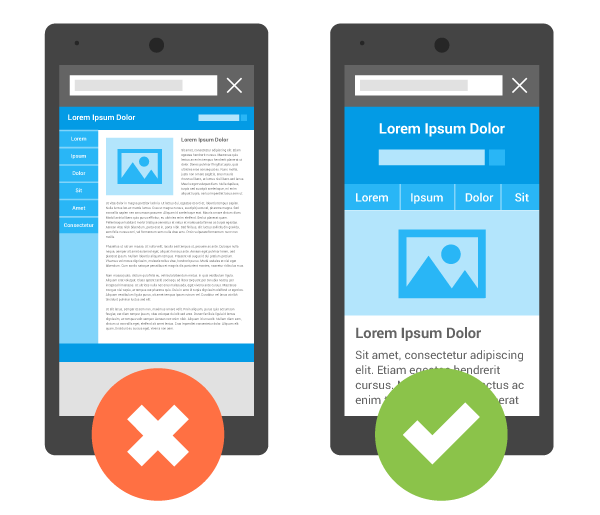Meta tags are a form of metadata which is the text used to describe the content of a webpage. This is so search engines can understand what your website is all about so that it appears on the correct search results pages. Meta tags are crucial for your SEO (Search Engine Optimisation) strategy.
In our guide, we’ll discuss the basics of meta tags and how to optimise them. After this article, you’ll know how to create effective meta tags for your website. Quality meta tags will help search engines optimise your website to boost your rankings. Read on to find out more!
Why Meta Tags Matter
Without quality meta tags, search engines won’t know how to categorise your site. With meta tags, you can highlight the most important parts of your content. When you optimise your meta tags search engines will know exactly what your web page is about and it will appear in the correct SERPs.

Furthermore, search engines value sites that provide an excellent user experience. Your content must be able to solve a problem or provide information a user is looking for. Meta tags ensure that the information users are looking for is displayed upfront and concisely.
Here are the benefits of quality meta tags:
- Increase in site traffic
- Improves user experience
- Boosts keyword ranking
- Improve engagement rates
- Increases your SERPs ranking
5 Types of Meta Tags and How to Optimise Them
There are different types of meta tags and each one has a specific purpose. Not all of them will be relevant to your SEO strategy. Here are five types of meta tags that will assist with your SEO goals.
Title Tags and How to Use Them
A title tag is one of the first features of your webpage that a user will notice. Your title tag should give the user a preview of what your content is about before they click on the site. This type of meta tag makes it easier for search engines to classify and crawl your web page.
The title tag is your first opportunity to capture the attention of the user. It could be exactly what a user is looking for which prompts them to click on your link.
How to Optimise Title Tag
Your title tag should be concise, extremely descriptive and no more than 55 characters. Longer title tags will be cut off in SERPs so users won’t be able to see the full title. So make sure it’s not longer than the recommended 55 characters.
Additionally, you should include your keyword within the title tag to improve your SEO. Each page and blog on your website should have a unique title tag. To create appealing title tags you can use sentence case or title case. And lastly, avoid using clickbait titles for your web pages because they may be flagged by search engines.

Meta Descriptions and How to Use Them
A meta description summarises the content of your web page and will appear under your title tag in SERPs. Your meta description must provide an accurate summary of your content so users know what information you’re providing before they click on the page.
This is another element that will determine whether users will click on your page or choose a competitor site. If the meta description isn’t relevant to your title tag you’ll lose traffic.
How to Optimise Meta Descriptions
Meta descriptions should be short, descriptive and relevant to your title tag. The summary should not be more than 160 characters and it must include the same keyword you used in your title. Each page on your website should have a unique meta description and use sentence case for it.
Robots Meta Tags and How to Use Them
Robot meta tags give instructions to search engines on which web pages must be indexed and crawled. It prevents search engines from indexing individual pages. The robot meta tag is placed in the <head> section of your web page.
The two main robot meta tags are:
- Noindex: Instructs search engines not to index certain content on your website.
- Nofollow: The instruction tells search engines not to crawl links and that you don’t endorse them. It also tells search engines that you’re not providing spammy links.

How to Optimise Robot Meta Tags
You want to use robot meta tags to avoid duplicate content penalties. Nofollow tags help if your comment section isn’t moderated. It prevents commenters from receiving backlinks from your site. Add Nofollow tags to widgets that you don’t endorse.
Optimising robot meta tags can be too technical for some so it’s best to opt for an SEO company to assist you. The company will ensure you use the correct robot meta tags for your website.
Viewport Meta Tags and How to Use Them
Viewport is a part of your website that is visible to your users and can look different on various devices. For example, the viewport meta tag may be smaller on a mobile device than on a laptop. The viewport meta tag has become crucial because more mobile users browse the internet compared to PC users.
Website developers use viewport meta tags to address your content size and scale which allows them to create mobile-friendly pages. The viewport tag instructs browsers such as Opera or Chrome to show a website in the scale of the device that’s being used.

How to Optimise Viewport Meta Tags
Users may leave your site if the content isn’t displayed correctly on their screens. Scaling content to the size of a screen improves user experience. If you want your site to be mobile friendly then add the following code to the <head> section of your page:
<meta name=”viewport” content=”width=device-width, initial-scale=1.0″>
Alt Text Meta Tags and How to Use Them
Do you use plenty of images on your web pages and blogs? Then you’ll need alt tags to optimise your images. This meta tag gives you an additional opportunity to increase your site’s ranking. The alt tag describes what the image is to search engines. Furthermore, the alt text will appear in place of the image if it fails to load on a website.
How to Optimise Your Alt Text
SEO experts suggest adding a keyword to the alt text to improve its optimisation. The alt text should describe the image concisely. For example, if the image is of an apple write an alt tag describing what it looks like e.g. shiny red liberty apple.
Can Anyone Create Effective Meta Tags?
You can use this guide to help you create effective meta tags for your web pages. However, if you don’t have the time to create quality meta tags you can opt for an SEO agency to assist you. This way you can concentrate on your business while a professional creates meta tags that will boost your ranking.
SEO agencies – such as Digital Insider – are experts at creating compelling title tags and meta tags for your web pages which has the potential to increase your click-through rate. If you’re struggling to incorporate the meta tags mentioned in this article we can assist you.
Let Digital Insider create an effective SEO strategy for your company. Call us on 0459 845 633 or request your strategy here! We want to help you increase your ranking to improve site traffic and lower your bounce rates with an effective SEO strategy tailored for your business.
